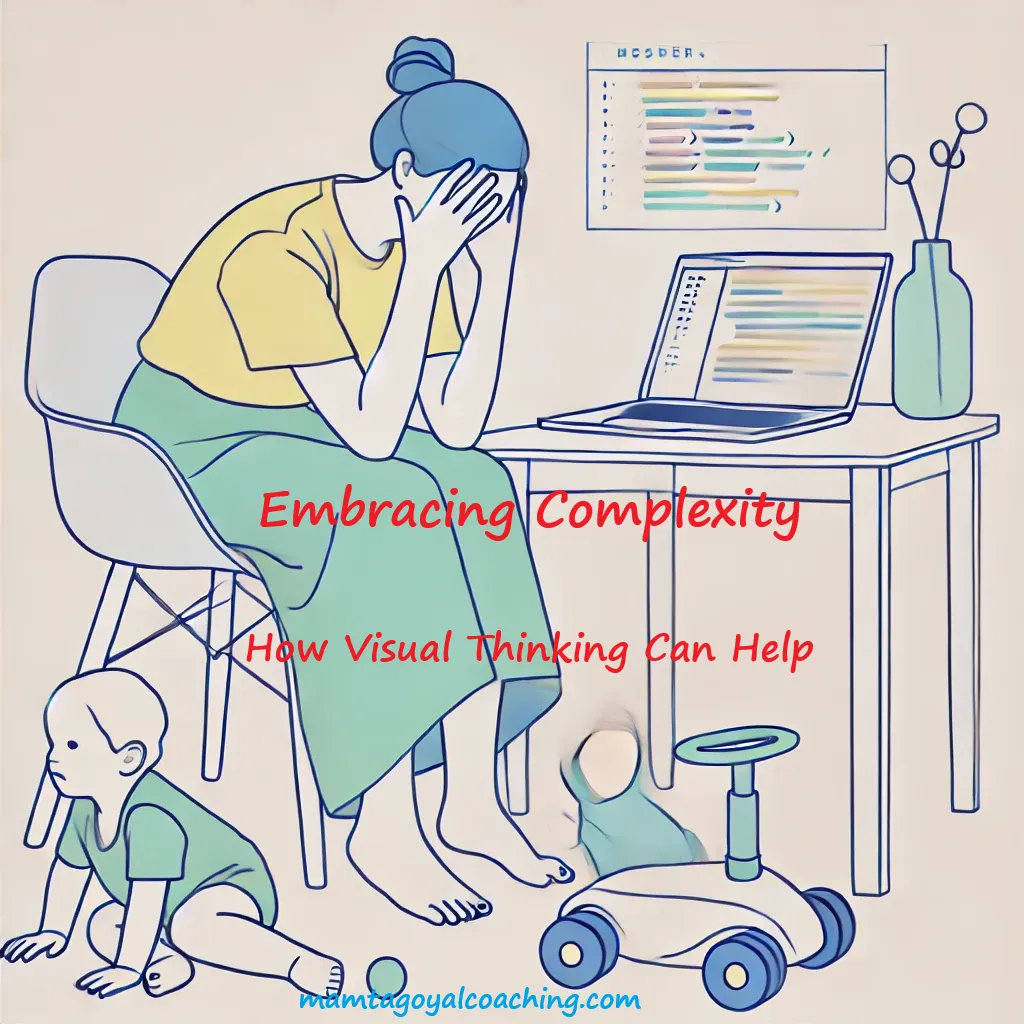
Balancing the Unbalanced: How Visualization Transformed My Work and Home Life
Balancing the Unbalanced
How Visualization Transformed My Work and Home Life
Balancing a career in a startup with raising young children was like juggling fireballs while walking a tightrope. The pace was fast, the demands unrelenting, and the stakes high. Add migraines into the mix, and my life became a whirlwind of exhaustion and stress. 😩 It seemed that every facet of my day—whether it was dealing with fussy toddlers or a looming work deadline—was fraught with tension.
I distinctly remember mornings that started with a splitting headache and ended in a haze of fatigue. My children needed my energy and attention, while my job demanded creativity, innovation, and endless focus. In this unforgiving equation, my health often took a backseat. Over time, a cycle of fatigue, irritability, and an unsettling sense of failure began to creep in. It was a classic case of trying to pour from an empty cup: I was giving and giving without ever stopping to refill my own energy reserves.

One night, as I sat in my living room with the lights dimmed (anything brighter felt like a lightning bolt to my migraine-prone head), I asked myself the question: How do I solve a problem that has so many dimensions? It felt akin to debugging a complex piece of software where multiple lines of code were throwing errors simultaneously. Where do you even begin?
The answer, somewhat surprisingly, was to visualize it. ✨ I started by sketching out a fishbone diagram (also known as an Ishikawa diagram) to untangle the different factors contributing to my stress and migraines. On one “bone,” I listed irregular meals, which frequently triggered my headaches; on another, I noted a chronic lack of sleep. Overcommitting at work had its own branch, as did my inability (or stubborn refusal) to ask for help. Seeing these issues visually laid out made them feel less nebulous and more like tangible challenges I could tackle. Suddenly, a path forward began to emerge.
Here’s what I discovered (and ultimately put into practice):
Setting Boundaries at Work
I learned that not every email demanded an immediate response, nor did every project require my attention 24/7. By establishing clearer boundaries—like turning off notifications after a certain hour—I protected precious family time and created space for rest.Building Self-Care Routines
Regular exercise and intentional breaks became non-negotiables. Something as simple as a brisk walk after lunch or a 10-minute meditation session helped reset my mind and body.Asking for Support
Whether it was asking my spouse to handle school pickups or delegating tasks to a colleague, I realized I didn’t have to shoulder every responsibility alone. Seeking help was not a sign of weakness; it was a crucial element of maintaining balance.
Not long after my personal situation began to improve, I was hired at a company to fix the morale of a dysfunctional team—a group split between 10 onsite and 10 offshore people. High workloads and poor communication were only the tip of the iceberg. The team required technical infrastructure changes, scheduling updates, gaining personnel insights, and—most importantly—building trust that things would change for the better and that management genuinely cared. It wasn’t just about meeting deadlines; it was about restoring faith in the organization and in each other.
I applied the same fishbone diagram technique to this complex environment. We broke down every challenge on separate “bones,” from time zone misalignments and communication gaps to unclear roles and responsibilities. The schedules of the constantly on-call engineers required fixing. On the infrastructure side, we identified outdated tools that needed to change. Crucially, we recognized that the biggest missing piece was genuine support—both from management and between team members.

Once we had visual clarity, we could attack each root cause methodically: putting on-call engineers on a rotation schedule, updating tools for smoother functioning, revising timelines to avoid overlap, creating open channels for feedback, and, of course, committing to more frequent acknowledgments of team wins. The effect was immediate. People felt heard, and there was a renewed sense of ownership and collaboration.
Complex problems often feel overwhelming because they’re multidimensional, messy, and interconnected. But when we map them out visually, clarity emerges. It’s like turning a tangled web of ideas and issues into a straight, navigable path. Tools like storyboards and fishbone diagrams might seem basic at first glance, but they’re incredibly powerful for pinpointing root causes and outlining step-by-step solutions. 🛠️
I invite you to consider adding visualization techniques to your own problem-solving toolkit—whether you’re grappling with a chaotic home life, a dysfunctional team, or both. Sketch your issues, draw connections, and see how each element influences the others. You might be surprised at how quickly your once-overwhelming challenges become manageable.
